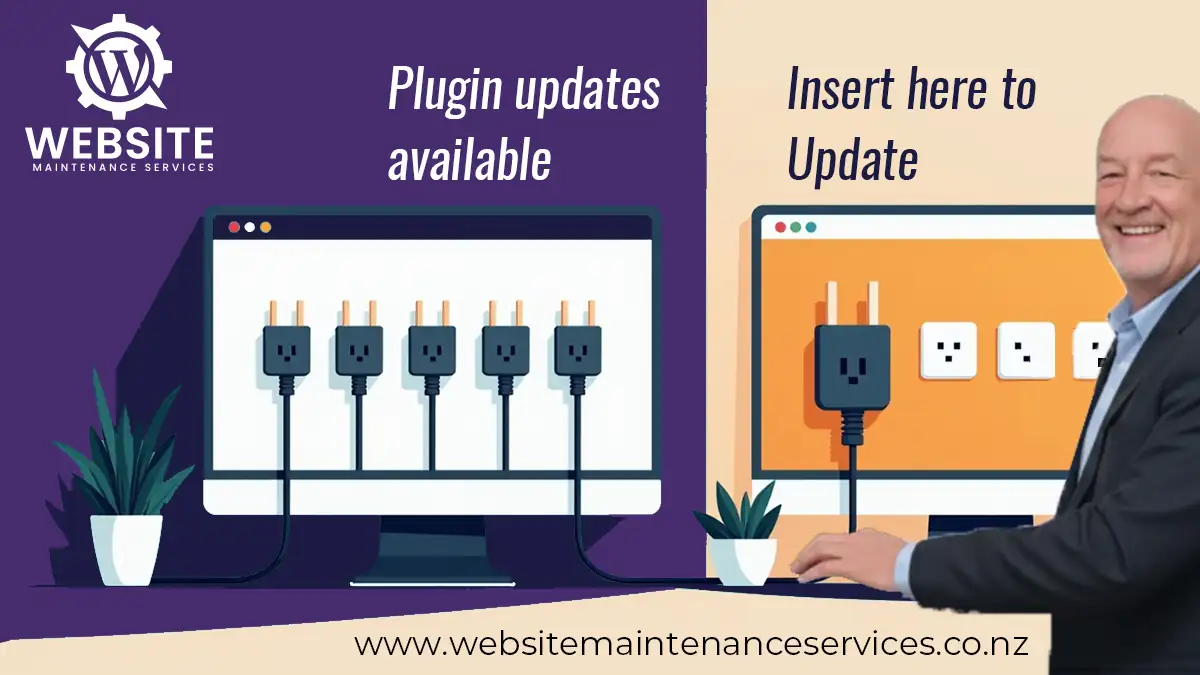Stop worrying about plugin updates. Get a free site audit to see how we can help.
Quote by Ben Kemp: “On our basic maintenance plan, when we handle your plugin and theme updates, we know almost immediately if a serious issue has occurred. There may be a brief interruption to services while we revert the changes by restoring from backup.”
For mission-critical websites, we can perform updates on a staging site first. This mirrors your live site and allows for testing without affecting the live environment. The staging site allows us to check for negative visual impacts before we deploy any changes to the live site. This is our mutual insurance policy, so you can be sure an update won’t unexpectedly break your website. Of course, time is money, and it cuts both ways… A Website Maintenance Plan that incorporates a staging site costs significantly more time per year to administer.
As a general rule, if you are using a design theme with good provenance and a child theme implemented, plus highly-rated mainstream plugins, updating issues are very rare.
Conversely, if your design theme is less reliable, such as:
- Multiple version updates were skipped, and it is seriously out of date,
- Was superseded by a major upgrade,
- And/or there’s no child theme implemented
- Or has previously been heavily customised by a designer who moved on,
- Plus, you have weird plugins performing essential tasks….
Under any of those circumstances, you would definitely want to be using a staging site!
Updating WordPress plugins and themes is vital for ensuring a site’s security and compatibility. The primary risk is a plugin or theme update causing a conflict that breaks the site. This can be a time-consuming ordeal to fix. These theme file updates and both plugin and theme security patches are critical for a seamless operation. Neglecting them leaves the site’s outdated software vulnerable to a WordPress hack.
WMS NZ offers a solution to this problem by using advanced tools and strategies. My team can implement a staging site to proactively check for negative impacts before deploying updates to the live site. Testing updates before they go live on the production site addresses the not uncommon problem of an update visually breaking a site’s layout. Other best practices for WMS NZ’s services include updating plugins in small batches to isolate any issues. A key part of this service is also the removal of inactive themes and plugins, which reduces a site’s attack surface and lessens the chance of conflicts. Assessing that all plugins are “best of breed” with known good provenance also improves reliability and minimises code conflicts.
Benefits and Risks of Timely Updates
Benefits:
- Proactive security. Regular updates close vulnerabilities that hackers could exploit.
- Seamless operation. Updates ensure that all components of the site work together with the latest WordPress core and other plugins.
- New features and bug fixes. Updates provide access to new functionalities and a more stable user experience.
Risks:
- Site crashes. A plugin conflict can lead to a site-wide failure, such as the “white screen of death”.
- Security vulnerabilities. Neglecting updates leaves a site open to attack, as outdated software is a common target for hackers.
- Time-consuming troubleshooting. When a conflict does arise, manually finding and fixing the issue can be a long and complex process.
Reference Links:
- https://www.codeable.io/blog/wordpress-plugin-updates/
- https://verpex.com/blog/privacy-security/is-it-safe-to-use-outdated-wordpress-plugins
- https://avada.com/blog/updating-wordpress-core-themes-plugins/
Page last Updated on Saturday, September 20, 2025 by the author Ben Kemp

